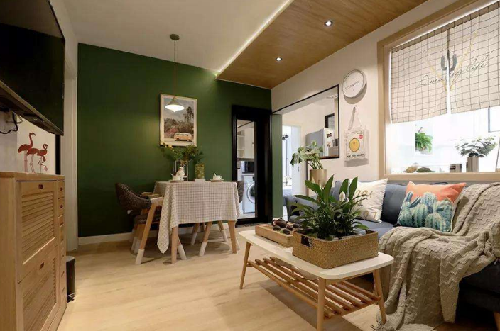
Home / Blog Center / Chargers / How to Handle Dampness on the Bathroom's Exterior Walls
How to Handle Dampness on the Bathroom's Exterior Walls
19/02/2025 | Hawkrown
The bathroom is one of the most moisture-prone areas in a home, especially during humid seasons. Due to the frequent use of the bathroom and the high level of water vapor, the wall dampness issue can easily occur. Here’s how to address the problem of dampness on the exterior walls of the bathroom.

How to Handle Dampness on the Bathroom's Exterior Walls
1. Improve Ventilation
A significant cause of dampness on the exterior walls of the bathroom is poor internal ventilation, which prevents the timely expulsion of moisture, leading to condensation on the walls. Therefore, improving ventilation is crucial in resolving this issue. Installing a fan or having a window in the bathroom can enhance air circulation between the inside and outside, helping to eliminate excess moisture and reducing the likelihood of wall dampness.
2. Choose Moisture-Resistant Paint
When renovating the exterior walls of the bathroom, opt for paint with good moisture resistance. These paints generally offer properties such as moisture-proofing, mold resistance, and breathability, effectively reducing the risk of wall dampness. Additionally, applying a waterproof treatment on the surface of the wall paint can further enhance its moisture resistance.
3. Use Moisture-Resistant Materials for Renovation
Besides choosing moisture-resistant paint, you can select moisture-resistant materials when renovating the exterior walls of the bathroom, such as moisture-resistant gypsum board or imitation stone plastic board. These materials possess strong moisture-resistant properties that can effectively prevent dampness from occurring in the walls. Moreover, they come in various colors and styles to meet different decor needs.

4. Keep the Bathroom Dry
The dryness of the bathroom significantly affects wall dampness. Therefore, to address the issue of dampness on the exterior walls, it is crucial to maintain regular cleaning and dehumidifying practices. Regularly wipe the walls and floor of the bathroom to keep them dry and clean. Additionally, placing moisture absorbers or dehumidifiers in the bathroom can help absorb excess moisture, reducing the likelihood of wall dampness.
5. Seek Professional Moisture-proof Treatment
If the dampness issue on the exterior walls is severe, it is advisable to seek professional moisture-proof treatment. Consulting with a professional renovation company or a moisture-proofing service can lead to comprehensive treatment of the bathroom's exterior walls, such as water-proofing the walls or installing moisture-proof insulation layers. This approach can thoroughly resolve the wall dampness issue and ensure the bathroom remains dry and clean.

Summary
In conclusion, addressing dampness on the exterior walls of the bathroom is essential as it can not only affect the overall aesthetic of the bathroom but also damage the wall structure. Timely intervention is necessary. The methods outlined above can effectively reduce or eliminate the dampness problem, ensuring a clean and dry bathroom. I hope these suggestions are helpful to you, and I wish you a dry and clean bathroom!


